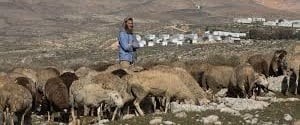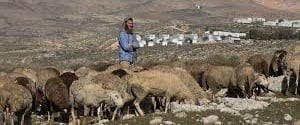By: Madeeha Araj,
Following the Akkivot Institute’s demand to disclose confidential documents from the Israeli archives on the territories occupied in 1967, a policy was recently revealed by the government of the occupation on granting a economic safety nets for investments for Israelis in the occupied territories in order to expand and promote settlement. It has appeared in the Israeli documents that the government created those networks in order to ensure that investments will not be lost if Israel withdraws from the West Bank from one hand, and to sell insurance policies against “political risks” on the other hand. The documents indicate that after the expansion of Israeli economic activity in the occupied territories and the increase in the volume of political guarantees granted, a private insurance company was established in the early 1970s funded and managed by the government.
.
According to the financial reports of the “Yeni Co.”, the Israeli government has pledged in the agreement with the company to pay the latter any amount to be paid under the compensation provided by the insurance policies. The Ministerial Committee for Economic Affairs ratified the establishment of Yanai in 1970, and its first meeting was held on Feb. 8, 1971. The agreement clarifies that the financing and management of the company is subject to the supervision of income and property taxes. The Director General of the Ministry of Finance determines the identity of those eligible for its services, but the ministers of security and finance stressed that “it was agreed not to introduce any item in the insurance policy that stipulates the company acts in the name of the government or its expense.”
Meanwhile, US President Trump’s recognition of Jerusalem as the capital of Israel has encouraged and increased settlement activity, and the theft of Palestinian land to strengthen Israeli control of the occupied city. This is clear from the agreement signed by the Israeli Ministry of Construction and Housing and the municipality of Ma’aleh Adumim, which implements a plan to build 20,000 settlement units in the settlement east of occupied Jerusalem. The agreement began with the construction of 470 settlement units. The plan includes the construction of an airport in the area of Bekaa in the area of the Prophet Moses in addition to hotels and public institutions and educational and sports halls, it is part of the project “Jerusalem 2050..
Israeli Housing and Construction Minister, Yoav Galant described the project as “comprehensive and would lead to the development and expansion of Ma’aleh Adumim settlement.” According to the agreement, in 2018 and 2025, residential and commercial units will be marketed in 15 locations. The budget for the development and infrastructure of the project is NIS 2.8 billion, while a budget of NIS 190 million has been allocated for the improving old buildings in the settlement.
Hebron is also targeted by settlement activity, especially the old town, which is under a fierce settlement attack, confiscating private and public properties and seizing the land to make it free from Palestinian existence. The Israeli government has allocated a budget of NIS 22 million To build 31 settlement units on land over the old garage of Hebron Municipality until a new occupation plan has been unveiled for the construction of other housing units in the vegetable market and the wholesale market. At the same time, the Israeli Foreign Ministry is trying to stop the work of the International Monitoring Force (TIPH), which has been operating in Hebron for about 20 years after the massacre at the Ibrahimi Mosque. According to Deputy Foreign Minister, Tzipi Hotoubili, a new phase of Israeli pressure to stop the activities of the force has begun,
Within the context of enhancing construction in settlement, a new outposts was transferred to a military base near the village of Jiftlik in the central Jordan Valley, it is called the Gadi camp near st. 90. Twelve Jewish families repaired six buildings inside the camp and live Inside it permanently.
In order to impose more control over the C classified areas, the extreme right-wing “Rajavim” movement submitted a report to the Knesset, attached by a proposal that is implemented silently following the passage of several racist laws that establish control over large areas. The report states, the army and the so-called civil administration and military rule in the West Bank support the annexation of more than 11-13% of Area C, specifically near the Apartheid Wall and the surrounding areas.
The Israeli Human Rights Organization B’Tselem has issued an extensive report on the focal points area that dealt with the damage caused to the Palestinian farmers since the construction of the apartheid wall and its impact on the security situation. The farmers called on the Israeli government to cancel the permit system, which disturb them to go to the military government offices several times to obtain permits, where 25% of applicants in the area are refused.
For his part, Israeli Defense Minister, Avigdor Lieberman recently decided to increase the number of workers in the so-called “Israel Lands Administration” by adding 280 employees. It is known that the Civil Administration is an Israeli military body that manages the affairs of the Palestinian before the establishment of the Palestinian Authority 1994. Thus, Israel re-activated its role following the reoccupation of the West Bank in 2002.
A list of Israeli Occupation and Settlers’ Assaults over the Last Week, Documented by the National Bureau:
Jerusalem:
- Demolishing a house under construction with an area of tens of meters in the town of Anata, northeast of Jerusalem, under the pretext of building without a permit.
- Distributing orders to demolish homes in the village of Issawiya, northeast of the city, including old houses.
- Breaking into the Shu’fat Refugee Camp in the center of occupied Jerusalem and launched a campaign of fines for shopkeepers worth 475 shekels per shop due to the placing of signs bearing the names of shops.
- The alleged “Temple organizations” call for the storming of Al-Aqsa Mosque.
Ramallah:
- Confiscating hundreds of donums from the land of the village of Budrus in Ramallah, for “security purposes”. The residents of the village were given a week to object to the decision in the Israeli courts after informing them about the confiscation plans. 80% of the village’s land has been confiscated since the Nakba.
Hebron:
- 30 dunums were bulldozed and over 550 olive trees were uprooted in the Qalamoun area west of the town of Beit Ula, and fences surrounding the land were destroyed there.
- Breaking into two houses in the Old City of Hebron and closed their entrances from inside.
- Storming the historic market of Qazazin, closing its iron gate, assaulting and chanting “Death to the Arabs”.
- Attacking olive pickers in the Tel Rumeida area and tried to prevent them from harvesting olive trees in the land surrounding the settlement of Ramat Yishai. The settlers were surprised by the land owner’s challenge to military measures and to enter his home with young activists against settlements and foreign solidarity.
- Demolishing two residential units in the area of Birin in the town of Yatta, south of Hebron, under the pretext of building without a permit.
Bethlehem:
- Threatening to demolish the school of challenge 5 within fifteen days in accordance with the decision of Ofer military court in the village of Jib al-Dhib.
- Storming the ancient Khirbet area in the town of Tekoa, they performed Talmudic rituals and imposed a security cordon on the area.
- Deploying soldiers in the Walaja village, and photographed the land there.
Nablus:
- Attacking a bulldozer driver and a member of the village council of Qaryut, while working on an agricultural road in the area of Battisha west of the town.
- Breaking into the archaeological site of Shaheleh Castle located in the town of Al-Naqoura and Ejnasia, during the restoration work carried out there in partnership with the Palestinian Ministry of Tourism and Antiquities.
Salfeet:
- Raiding the town of Zawiya west of Salfit and handed over four notices to stop construction, including a house under construction under the pretext of building without a permit.
Tulkarm:
- Uprooting olive trees in the land adjacent to the settlement of Avni Hefetz, located on the lands of Shufa, Kufr al-Labad and Kaffa villages in Tulkarm governorate.
For further information, please click the following link:
The Palestine Liberation Organization (PLO)
 المكتب الوطني للدفاع عن الارض ومقاومة الاستيطان منظمة التحرير الفلسطينية
المكتب الوطني للدفاع عن الارض ومقاومة الاستيطان منظمة التحرير الفلسطينية




